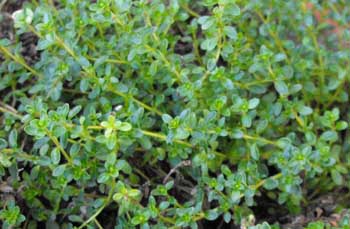

CARAWAY THYME GROUND COVER FULL
Shade: F = full shade S = semi-shade N = no shade. pH: A = acid N = neutral B = basic (alkaline). Soil: L = light (sandy) M = medium H = heavy (clay). Lemon Thyme, Creeping Lemon Thyme, Lemon-Scented Thyme Mother of thyme, Creeping thyme, Woolly Thyme IUCN Red List of Threatened Plants Status : Please note that a plant may be invasive in one area but may not in your area so it’s worth checking. If available other names are mentioned hereĬountries where the plant has been found are listed here if the information is availableĪustralia, Canada, Corsica, Mediterranean, North America, Sardinia, Weed Potential Cuttings of half-ripe wood, 5 - 8cm with a heel, July/August in a frame. Cuttings of young shoots, 5 - 8cm with a heel, May/June in a frame. Plant them out in the summer or the following spring. We have found that it is best to pot up smaller divisions and grow them on in light shade in a greenhouse or cold frame until they are growing away well. Larger divisions can be planted out direct into their permanent positions. Plant them out into their permanent positions in late spring or early summer, after the last expected frosts. The foliage has a strong aroma of caraway. The leaves are 4 to 10 mm (0.2 to 0.4 in) long, lanceolate, dark glossy green and hairy. When they are large enough to handle, prick the seedlings out into individual pots and grow them on in the greenhouse for at least their first winter. Caraway thyme is a creeping, woody-based perennial, growing to 10 to 25 cm (4 to 10 in) high and spreading out across the ground to a width of 30 cm (12 in). Seed can also be sown in autumn in a greenhouse. Our new book to be released soon is Edible Shrubs. Book titles include Edible Plants, Edible Perennials, Edible Trees, and Woodland Gardening. Plants For A Future have a number of books available in paperback and digital form. Type a value in the Celsius field to convert the value to Fahrenheit: References Carbon Farming Information and Carbon Sequestration Information Temperature Converter Special Features:Attractive foliage, Edible, Fragrant foliage, Not North American native, Flower characteristics are unknown. This is a very difficult genus taxonomically, the species hybridize freely with each other and often intergrade into each other. The flowers are rich in nectar and are very attractive to honey bees.

'Lemon Scented' has a strong lemon scent. 'Nutmeg' is fast growing and has a pronounced fragrance somewhat reminiscent of nutmeg. The leaves of the species have a delicious caraway scent. This species is not hardy in the colder areas of the country, it tolerates temperatures down to between -5 and -10°c. A layer of gravel on the soil around them will help protect the foliage from wet soils. Thymes dislike wet conditions, especially in the winter. Grows well between stepping stones on paths, tolerating light treading. Succeeds in dry soils, tolerating drought once it is established. Requires a well-drained soil in a sunny position. Landscape Uses:Container, Ground cover, Rock garden.


 0 kommentar(er)
0 kommentar(er)
